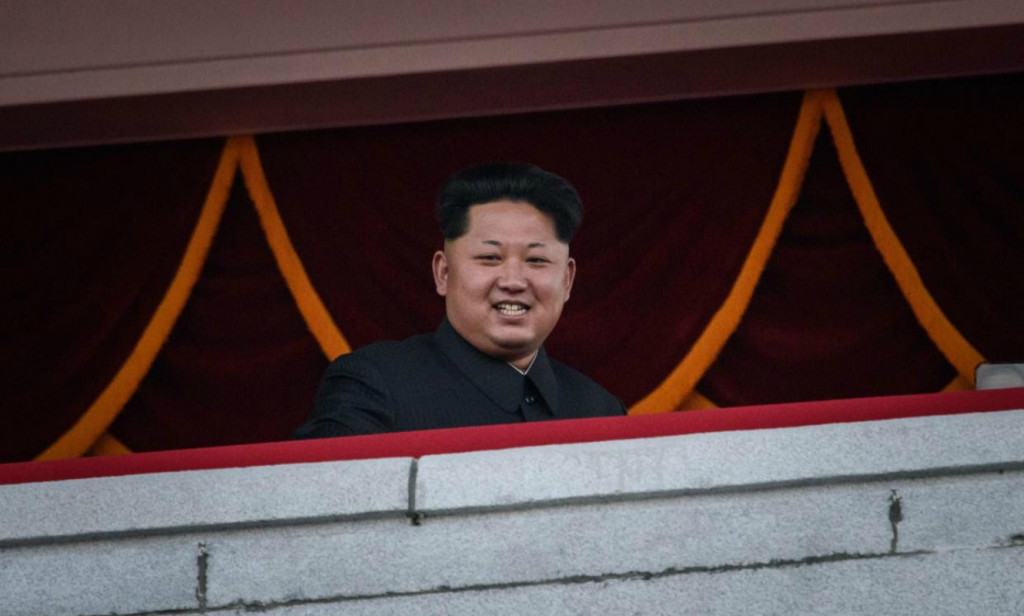North Korea’s Nuclear Insecurity Summit

North Korea is preparing to detonate yet another nuclear device, the second such test this year and the fifth overall. Although some feared an atmospheric test, the plan appears to call for another underground blast, thereby limiting most of the fallout to heavy-handed messaging from Pyongyang. Domestic audiences, elite and popular alike, should pick up on the narrative that Kim Jong Un is the mightiest of all the Kim family dictators. Internationally, the nuclear and missile antics are North Korea’s response to American-led military exercises and diplomacy.
Clearly Kim is repudiating his father’s 2005 pledge to pursue denuclearization and the Six Party Talks process that encouraged that commitment. But he is also spurning the entire edifice of agreements, diplomatic forums, and security mechanisms that comprise the loosely organized nuclear nonproliferation regime.
Kim’s nuclear proliferation contrasts sharply with the rhetoric of the recent Nuclear Security Summit hosted by President Barack Obama. That meeting ended with high-minded statements of hope, a testament to how during four summits over the past six years, world leaders have tried to lock down nuclear materials and facilities before they wind up being used to commit mass destruction.
But while high-level officials assembled in Washington, DC on the first of April for perhaps the final Nuclear Security Summit, Kim continued his own nuclear in-security clinic. Since the beginning of the year, Kim’s actions and pronouncements are undermining the best intentions of the Nuclear Security Summit, the nuclear nonproliferation regime, and the credibility of the United States and the U.S.–South Korean alliance.
Consider Kim’s actions since the beginning of this year. He apparently tested a boosted-fission nuclear device, and boasted that he would soon test another (the coming fifth test). He launched a long-range, three-stage rocket, and demonstrated a powerful new rocket engine. He fired several mobile missiles, although an intermediate-range Musudan missile test on the anniversary of Kim Il Sung’s birthday was quickly judged a failure. He announced North Korea’s mastery of both nuclear warhead miniaturization and warhead reentry technology. And he threatened preemptive nuclear strikes on the United States.
In short, Kim embarked on a crash program to develop a mobile, long-range, nuclear-armed missile, and his efforts are negating the valiant attempts by the international community to tamp down nuclear dangers.
What is the reason for Kim’s rush to weaken the nuclear nonproliferation regime? He is heading into the 7th Congress of the Workers’ Party of Korea in May, a conclave he is orchestrating to complete his coronation. Some 53 months after the death of his father and 36 years after his grandfather held the 6th party conference, the 33-year-old leader is still seeking to consolidate his power. Kim likely thinks a long-range nuclear weapon would solidify his grip on the throne.
Nuclear-tipped missiles are Kim’s way of compensating for his own lack of potency. That is why Kim works overtime to control the internal security mechanisms of power, using the narrative of external enemies to reinforce his unchecked authorities. After all, would 25 million North Koreans who languish under an oppressive regime and a failed economy continue to worship Kim if they knew the truth?
No wonder South Korean President Park Geun-hye declared her “strong conviction that the vision for a nuclear-free world must begin with the Korean peninsula.” While the Nuclear Security Summit communiqué said the summits have “raised awareness of this threat and driven many tangible, meaningful and lasting improvements in nuclear security,” they have failed to contain North Korea’s nuclear programs.
When the world assembles to avert nuclear dangers, proliferation continues. That is the basic sad fact that one might draw from recent events. Summits, it turns out, are better at shining a spotlight on problems than they are at actually resolving them.
Kim’s actions are making a mockery of the cornerstone of the international regime to halt nuclear dangers. International sanctions, North Korean media have the audacity to complain, are blocking North Korea’s “legitimate access to nuclear weapons.” The statement deliberately collides with the serious responsibilities of states enshrined in the Treaty on the Non-Proliferation of Nuclear Weapons (NPT).
North Korea is playing with fire. South Korea could develop nuclear weapons within a year or two but chooses not to in order to contribute to global security. The United States and South Korea could seriously threaten the North Korean regime, but they choose not to in order to preserve the peace.
Ever since the advent of the nuclear age, the world has oscillated between the fear of catastrophic nuclear war, and the remarkable durability of deterrence by the threat of nuclear punishment. The nuclear nonproliferation regime has limited the spread of dangerous weapons, but it has not ended humanity’s tussle with nuclear security.
North Korea’s Kim is the prime spoiler of the global nonproliferation regime. He is operating by his own reckless rules. He poses an acute threat to peace through his weapons and propaganda. He is one miscalculation or accident away from unleashing a potential nuclear nightmare.
Dr. Patrick M. Cronin is Senior Advisor and Senior Director of the Asia-Pacific Security Program at the Center for a New American Security (CNAS) in Washington, D.C.

